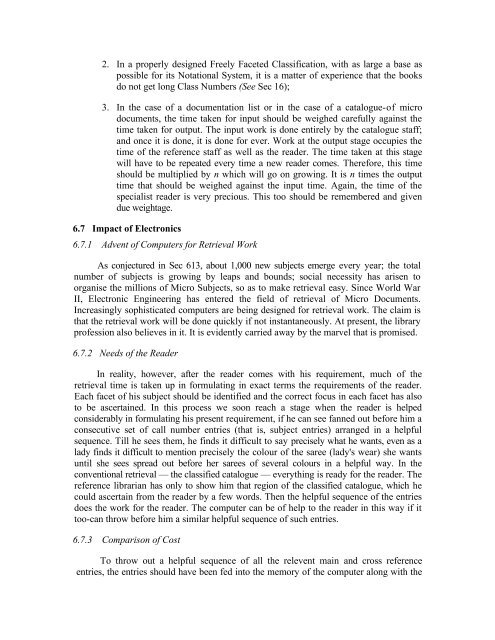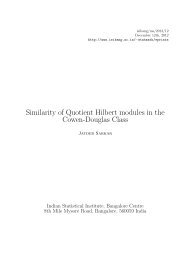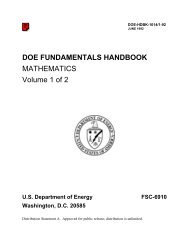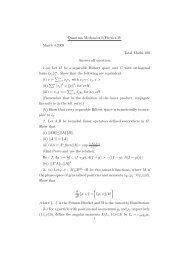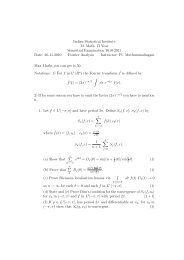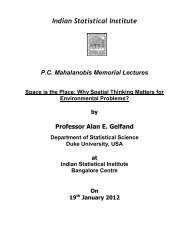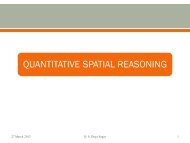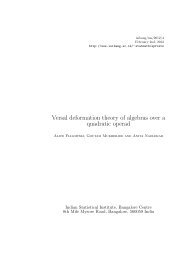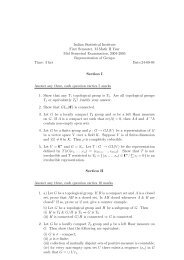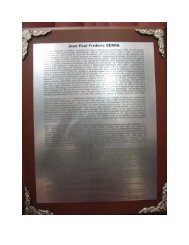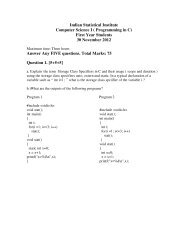CHOICE OF SCHEME FOR CLASSIFICATION - Indian Statistical ...
CHOICE OF SCHEME FOR CLASSIFICATION - Indian Statistical ...
CHOICE OF SCHEME FOR CLASSIFICATION - Indian Statistical ...
Create successful ePaper yourself
Turn your PDF publications into a flip-book with our unique Google optimized e-Paper software.
2. In a properly designed Freely Faceted Classification, with as large a base as<br />
possible for its Notational System, it is a matter of experience that the books<br />
do not get long Class Numbers (See Sec 16);<br />
3. In the case of a documentation list or in the case of a catalogue-of micro<br />
documents, the time taken for input should be weighed carefully against the<br />
time taken for output. The input work is done entirely by the catalogue staff;<br />
and once it is done, it is done for ever. Work at the output stage occupies the<br />
time of the reference staff as well as the reader. The time taken at this stage<br />
will have to be repeated every time a new reader comes. Therefore, this time<br />
should be multiplied by n which will go on growing. It is n times the output<br />
time that should be weighed against the input time. Again, the time of the<br />
specialist reader is very precious. This too should be remembered and given<br />
due weightage.<br />
6.7 Impact of Electronics<br />
6.7.1 Advent of Computers for Retrieval Work<br />
As conjectured in Sec 613, about 1,000 new subjects emerge every year; the total<br />
number of subjects is growing by leaps and bounds; social necessity has arisen to<br />
organise the millions of Micro Subjects, so as to make retrieval easy. Since World War<br />
II, Electronic Engineering has entered the field of retrieval of Micro Documents.<br />
Increasingly sophisticated computers are being designed for retrieval work. The claim is<br />
that the retrieval work will be done quickly if not instantaneously. At present, the library<br />
profession also believes in it. It is evidently carried away by the marvel that is promised.<br />
6.7.2 Needs of the Reader<br />
In reality, however, after the reader comes with his requirement, much of the<br />
retrieval time is taken up in formulating in exact terms the requirements of the reader.<br />
Each facet of his subject should be identified and the correct focus in each facet has also<br />
to be ascertained. In this process we soon reach a stage when the reader is helped<br />
considerably in formulating his present requirement, if he can see fanned out before him a<br />
consecutive set of call number entries (that is, subject entries) arranged in a helpful<br />
sequence. Till he sees them, he finds it difficult to say precisely what he wants, even as a<br />
lady finds it difficult to mention precisely the colour of the saree (lady's wear) she wants<br />
until she sees spread out before her sarees of several colours in a helpful way. In the<br />
conventional retrieval — the classified catalogue — everything is ready for the reader. The<br />
reference librarian has only to show him that region of the classified catalogue, which he<br />
could ascertain from the reader by a few words. Then the helpful sequence of the entries<br />
does the work for the reader. The computer can be of help to the reader in this way if it<br />
too-can throw before him a similar helpful sequence of such entries.<br />
6.7.3 Comparison of Cost<br />
To throw out a helpful sequence of all the relevent main and cross reference<br />
entries, the entries should have been fed into the memory of the computer along with the


